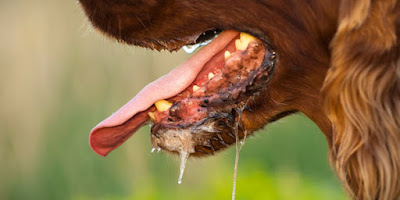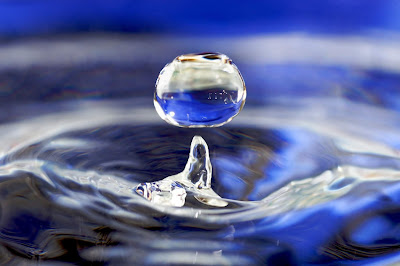Hydropathic Baths
is weakness of the heart the cold water should
also be poured upon the front of the chest. Note that, this kind of bath must
be taken by concerning a hydropathic physician.
4. Sponge Bath
In some health condition when patient is not able
to take bath, like in fever, sponge baths will take. In this bath whole body
may be washed clean by a sponge dipped in cold, warm, hot or electrified water.
If washed with hot or warm water, the same parts must be washed again with a
sponge dipped in cold water.
5. The Shallow or Half Bath
This is a common bath taken by sitting in a
leaning posture in a tub five feet long two feet wide and one foot deep, the
person lies down in it half filled with water and rubs quickly the legs, arms
and body or an attendant does all that for him. It is better if the bather does
all that himself. The water may be cold or tepid and taken for ten minutes. It
promotes circulation and brings on refreshing sleep. It also relieves
congestions and obstructions of the central organs.
6. Hydropathic Partial Baths
Any decent water tub can be used for head-bath,
eye-bath, arm-bath, hand-bath, leg-bath, foot-bath, etc.
In head-bath, the patient should lie on a
mat and the back of his head must be placed in broad shallow basin containing cold
water and about four inches deep. The forehead may be dipped in that cold water
in succession each five minutes so that the whole bath may occupy 20 to 30
minutes. After this bath the head must be rubbed with a clean towel and dried
up properly and exposed to sunlight and fresh air if necessary. This head bath
serves as a powerful tonic to the nervous centres and serves as a reliable
remedy for headaches, neuralgic pains of the head, ears or face, convulsions,
epilepsy, rheumatism of the scalp, ophthalmia, deafness, loss of smell, loss of
taste, palpitations, nervous weakness, night emissions, spinal weakness, etc.
It also strengthens hair roots and improves the colour of the hair by promoting
the flow of blood to brain and scalp and by eliminating waste matter from these
parts.
The leg bath is taken by dipping the whole leg as far as the knees in cold or hot water for from 10 to 30 minutes as the case may be. They are also of great service in amenorrhoea, dysmenorrhoea, ovarian congestion, pelvic pain, pulmonary or hepatic congestiuon, etc.
In the cold foot bath, is taken with very cold water, poured in a spacious tub four inches deep. The feet previously warmed are immersed in that water for 5 or 6 minutes, the friction should be applied to the feet continuously during the bath by the hands of the attendants or by the patient himself by rubbing one foot over the other in alteration. It is useful in cerebral congestion, uterine haemorrhages and in coldness of extremities, sprains, strains, irritability, etc. Caution, it is not indicated in prostatitis, peritonitis, hepatic, uterine, renal and intestinal congestions, where hot foot baths will serve the purpose.
The sole bath is taken by dipping the soles
in cold, tepid or hot water a quarter of an inch deep for about 15 minutes.
After cold bath the soles must be rubbed well and after hot bath they must be
dipped in cold water for 30 seconds.
7. The Eye bath
A wash tub or basin is filled in with pure water
and the head is immersed in it and the eyes are opened and the head is moved to
and fro both the sides so that so the water may touch freely and clean the
internal parts of the eyes properly. This process should be repeated several
times a day if necessary according to the needs. This eye bath is a remedy for
weakness of eyes, dimness of sight, pain, burning, inflammation and even
suppuration of the eyes.
8. Vapour or Steam Baths
The vapour bath is not only an excellent means of
encouraging the curative process in all kinds of illness by loosening the
morbid matter and preparing it for removal or even removing it itself, but it is
also particularly useful forwarding of disease. A vapour bath is the best means
of ridding the system of its excess of serum and of restoring the tone of the
nerves and muscles and every man who wants to keep in the best working form
should take one or two steam bath every week. The skin is softened by the
action of steam, the cast cells of the epidermis are removed by a suitable massage
accompanying the bath, and blood is drawn to the surface of the body and with
out-breaks of perspiration. The quantity of morbid matter is discharged through
the skin.
The patient should undress himself and be down at full length on a cane bottomed cot or sofa and cover himself up with a woollen blanket hanging down on both sides of the cot to prevent steam from escaping. The attendant then should place one boiling water pot under the cot below the lower back, second under feet, and third under back.
After 10 to 15 minutes if the steam becomes less,
fresh steam may be obtained by gently plunging a hot brick or stone into the
pots. After 15 minutes the patient should turn round and lie flat on his chest
and abdomen.
9. Artificial Sea Water Bath
These kinds of baths are useful for obesity and
chronic catarrh. However, they are not suited for congestions, inflammations,
haemorrhages and renal troubles.
For an artificial sea water bath employ 8 pounds
of sea salt for 30 gallons of water or the following mixture of
- Chloride of sodium or common salt seven pounds,
- Magnesium Chloride one pound,
- Magnesium sulphate half pound,
- Water 30 gallons.














Comments
Post a Comment